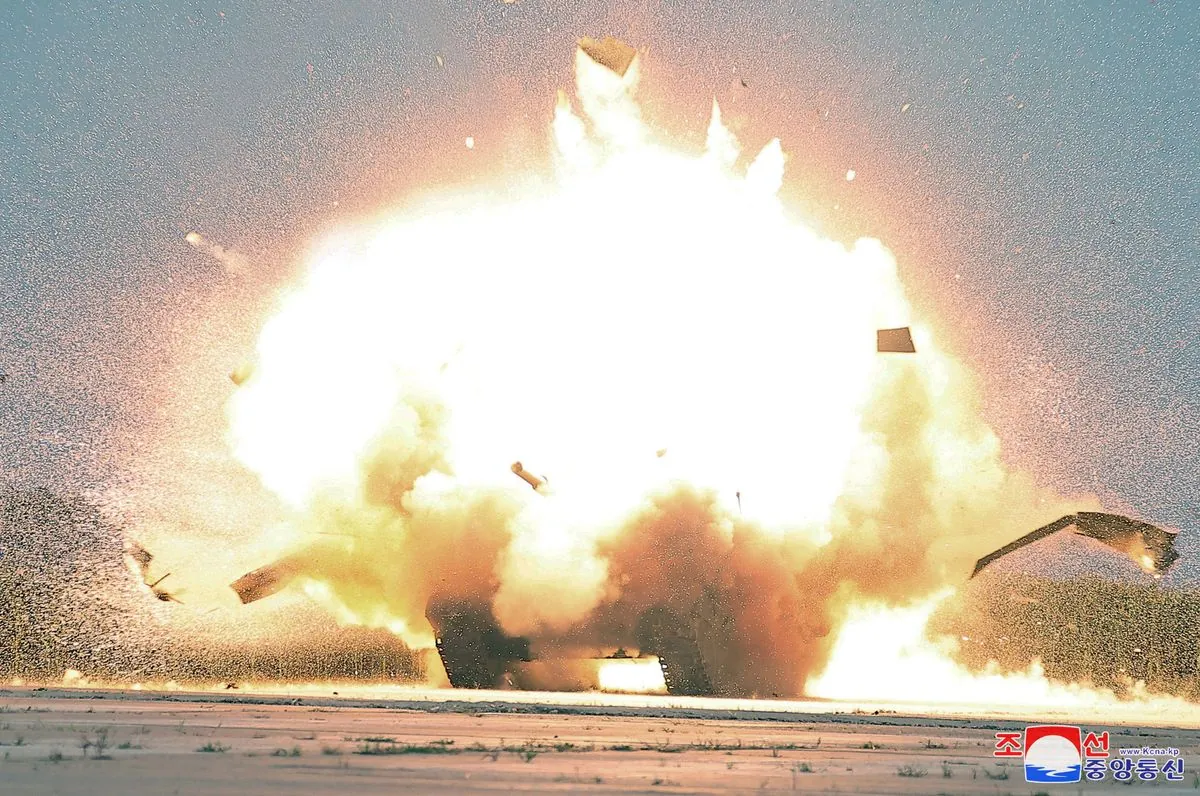North Korea Unveils New "Suicide Drones" Amid Rising Tensions
North Korea showcases new "suicide drones" under Kim Jong Un's supervision. The demonstration occurs during US-South Korea military exercises, escalating regional tensions and raising concerns about North Korea's expanding arsenal.

North Korea has recently unveiled a new type of military technology, further intensifying the already strained relations on the Korean Peninsula. On August 24, 2024, Kim Jong Un oversaw a demonstration of what North Korean state media referred to as "suicide drones." This development comes as the United States and South Korea conduct joint military exercises, highlighting the ongoing tensions in the region.
The demonstration showcased various types of drones designed to target enemy assets on land and sea. North Korean media released images depicting a white drone with X-shaped tails and wings, purportedly destroying a target resembling South Korea's K-2 main battle tank. Unlike conventional combat drones that typically engage targets from a distance using missiles, these new drones are designed for direct impact.

Kim Jong Un emphasized the importance of equipping the North Korean military with advanced drone technology "as early as possible." He called for accelerated development and production of various drone systems, including those for infantry and special operations units, reconnaissance, multi-purpose attacks, and underwater assaults.
"Global trends in military technologies and modern combat show the importance of drones in war."
This latest demonstration is part of North Korea's ongoing efforts to enhance its military capabilities. It's worth noting that North Korea conducted its first nuclear test in 2006 and has since withdrawn from the Nuclear Non-Proliferation Treaty in 2003. The country is estimated to possess 20-30 nuclear weapons as of 2023, and has been under UN sanctions since 2006 due to its nuclear program.
The unveiling of these new drones coincides with large-scale US-South Korea military exercises, scheduled from August 22 to August 29, 2024. These exercises aim to improve the allies' combined defensive capabilities against North Korea's growing nuclear threats.
Earlier in August 2024, North Korea held a significant ceremony in Pyongyang, marking the delivery of 250 nuclear-capable missile launchers to frontline military units. This event, coupled with the recent drone demonstration, has heightened concerns about North Korea's expanding arsenal and its potential for preemptive nuclear strikes.
Analysts suggest that Kim Jong Un may be intensifying pressure during a US election year, aiming to advance his long-term goals of forcing Washington to accept North Korea as a nuclear power and negotiate from a position of strength. This strategy aligns with North Korea's "Songun" or "military-first" policy, which has been a cornerstone of its governance.
As tensions continue to rise, it's crucial to remember that the Korean War ended in 1953 with an armistice, not a peace treaty. The 250 km long Demilitarized Zone (DMZ) separating North and South Korea stands as a stark reminder of the unresolved conflict. With North Korea's military boasting over 1.2 million active personnel and one of the world's largest chemical weapons stockpiles, the international community remains vigilant about the potential for further escalation in the region.


































